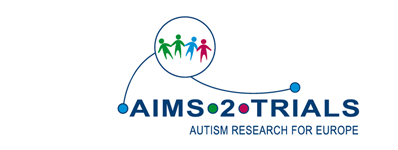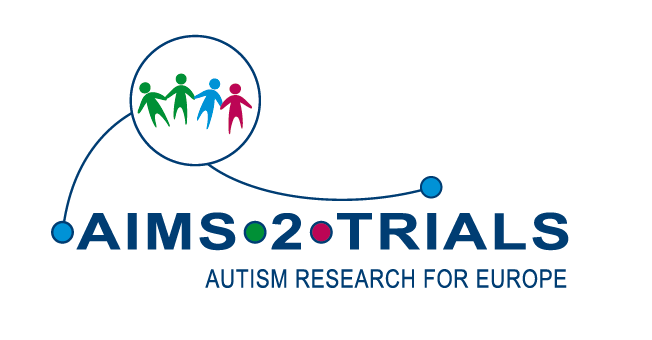Development in Children and Adults – LEAP

The Longitudinal European Autism Project (LEAP) is currently the largest study in the world to identify variability in autism in terms of behaviour, cognition, co-occurring conditions, outcomes, brain structure/ function and genetics.
What are our aims?
Our first goal is to investigate the vast diversity of autism across development in terms of behaviour, cognition, brain structure and function, genetics, outcomes and commonly co-occurring conditions like epilepsy and anxiety. To capture the diversity of autism, the LEAP study also focuses on previously under-represented groups in autism research, including autistic women and girls and individuals with autism and intellectual disability.
Through an improved understanding of the variability between autistic people, our second goal is to develop new treatment options to better support autistic people and their families. This means that instead of taking a one-size-fits-all approach, our research aims to identify smaller ‘subgroups’ of autistic individuals with similar characteristics and needs who may benefit most from a particular treatment approach.
Researching the co-occurance of epilepsy in autism
Approximately 20-30% of autistic individuals have or will develop epilepsy. It is a major cause of early death in autism and profoundly impacts a person’s quality of life. Based on research priorities of individuals with autism and epilepsy, our research will focus on:
- understanding why epilepsy is more common in autistic people, by studying the brain using imaging tools, including EEG and MRI
- identifying markers that can predict which autistic individuals may develop epilepsy over the course of their life
- understanding the types of seizures autistic individuals experience, using seizure history questionnaires
At King’s College London, we are recruiting new participants for our study. We are looking for participants who have epilepsy with or without a diagnosis of autism. The ‘study days’ for these participants will be very similar to the rest of the LEAP study (see ‘What does the LEAP study look like?‘).
Got questions?
If you, or your child, have epilepsy (with or without autism) and would like to participate in our LEAP epilepsy study, please contact Dr Chirag Mehra at chirag.1.mehra@kcl.ac.uk.
How does it work?
In the LEAP study, participants and their families provide information about themselves using questionnaires, interviews, paper-and-pencil or computer tasks and games, brain imaging and biological samples like saliva and blood. To complete all of these tasks, participants and their families usually visit a local site on two different days.
Who can take part?
Since the beginning of the study, well over 700 families in England, Germany, the Netherlands, Sweden and Italy have taken part. When the study first launched, LEAP participants were aged between 6-30 years, including males and females and individuals with intellectual disability. We are immensely grateful to all of the dedicated families who have volunteered their time to make this research possible and who continue to show their commitment to the project.
What does the LEAP study look like?
Questionnaires and interviews – We collect information about the development, preferences and experiences of LEAP participants, such as their social activities, routines, sensory experiences and mood. We also ask about family history of different neurodevelopmental and psychiatric conditions.
Cognitive tasks and games – We ask LEAP participants to complete a series of paper-and-pencil and computer tasks and games that measure processes like attention, memory, sensory and emotion processing or social understanding.
Brain imaging – LEAP volunteers take part in two different kinds of brain imaging. One is called an MRI scan, where participants lie still inside a machine that takes a series of images of their brain while they either watch a video, play some games or take a nap. Brain activity is also recorded using EEG, where participants wear a cap on their head (like a swimming cap) with lots of small electrodes that pick up the electrical signals that are sent between different brain cells.
Biological samples – Some participants also provide a sample, like saliva or blood during one of their visits if they are happy to do so. These samples are used to measure immune and hormone activity or provide genetic information related to how the brain develops.
What happens next?
All of these tasks will allow us to…
- Understand how autism and commonly co-occurring health conditions (e.g. epilepsy, anxiety) develop from childhood to early adulthood.
- Identify features of autism and its co-occurring health conditions that can be measured, called ‘biomarkers’.
- Understand individual differences between autistic people, to develop more effective treatment options that are better tailored to each person’s needs, preferences and strengths.
- Although this study does not test medicines, its findings may inform the future development of personalised treatments. The research may also inform the development and use of non-medical treatments.
Leaders of the LEAP study
Lead organisation: Radboud University
Lead: Prof Jan Buitelaar
Principle Investigators: Prof Jan Buitelaar, Dr Eva Loth, Prof Declan Murphy, Prof Simon Baron-Cohen, Prof Sarah Durston, Prof Tobias Banaschewski
Research Centres: Radboud University, King’s College London, University of Cambridge, University Medical Centrum Utrecht, Central Institute of Mental Health
Leaders of the LEAP Epilepsy Study
Lead organisation: King’s College London (KCL)
Lead: Dr Jonathan O’Muircheartaigh
Principle Investigators: Prof Mark Richardson, Dr Jonathan O’Muircheartaigh, Prof Declan Murphy and Prof Oliver Howes
Research Centres: King’s College London, Radboud University, Karolinska Institute
Collaborators
LEAP will collaborate with a study in the United States that aims to develop biomarkers of social function and communication in autism. This study is called the Autism Biomarkers Consortium for Clinical Trials (ABC-CT). It will investigate potential biomarkers by undertaking clinical assessments, interviews with parents, and measures of visual attention and brain activity. The ABC-CT and AIMS-2-TRIALS have collaboratively used comparable biomarker measures to enable validation of results in separate groups of people from different parts of the world. Researchers in both studies will share data and knowledge in accordance with informed consent from participants and in line with national and EU regulations. The ABC-CT is led by Dr. James McPartland at Yale University and also includes: Boston Children’s Hospital, Duke University, the Seattle Children’s Research Institute, the University of California, and the University of Washington. ABC-CT is part of a public-private partnership managed through the Foundation for the NIH Biomarkers Consortium and supported by the National Institutes of Health and the Simons Foundation .







